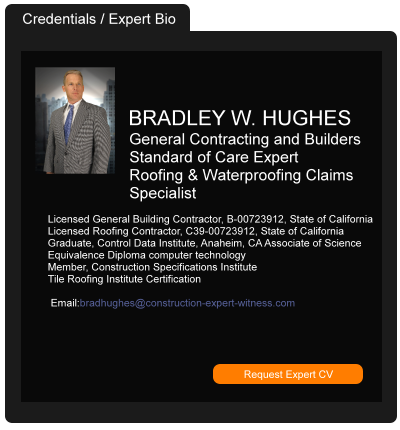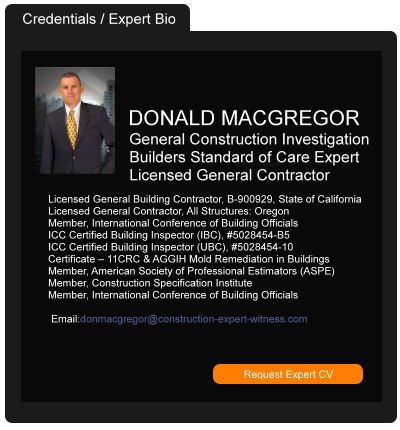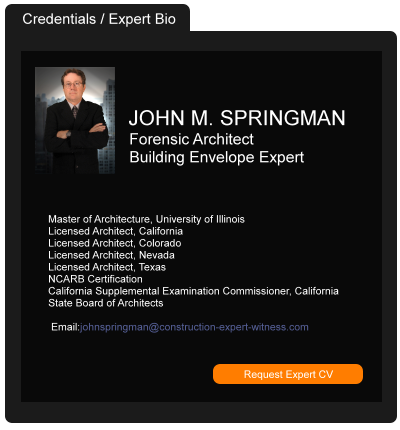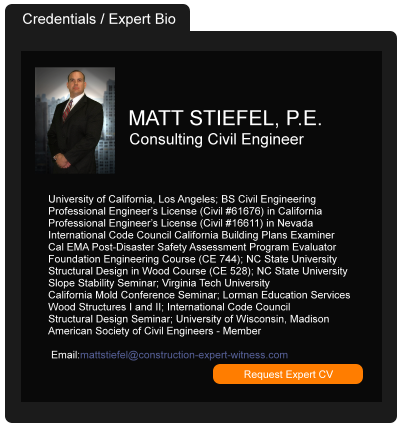Entire Fairness or Business Judgment? It’s Anyone’s Guess
January 09, 2015 —
Maurice Pesso, Greg M. Steinberg and Christopher J. Orrico – White and Williams LLPIn lawsuits challenging the validity of business transactions and combinations, the most significant issue is often which standard of review the court applies: the defense-friendly “Business Judgment Rule” or the more stringent “Entire Fairness Standard.” The standard utilized by the court – or more often times the standard which the parties think the court will apply – can drive decisions on motion practice, settlement discussions, and resolution strategy. Under the Business Judgment Rule, directors are presumed to have acted in good faith and their decisions will only be questioned when they are shown to have engaged in self-dealing or fraud. However, if a “Controlling Shareholder” stands on both sides of the transaction, the court will often scrutinize the transaction under the more plaintiff-friendly “Entire Fairness Standard.”
So, what constitutes a “Controlling Shareholder?” If the party in question owns more than 50% of a company’s equity, the answer is clear-cut. However, for cases involving stockholders who own less than 50% of a company’s equity and stand on both sides of the disputed transaction, the answer is not so simple. This uncertainty was highlighted in back-to-back decisions by the Delaware Chancery Court in November 2014. On November 25, 2014, the court granted the defendants’ motion to dismiss a derivative lawsuit alleging breach of fiduciary duty in In Re Sanchez Energy Derivative Litigation (“Sanchez”). Vice Chancellor Glasscock held that the complaint failed to plead facts sufficient to raise an inference that two directors with a collective 21.5% equity interest in the company were Controlling Shareholders. The very next day, in In Re Zhongpin Inc. Stockholders Litigation (“Zhongpin”), the Delaware Chancery Court denied the defendants’ motion to dismiss breach of fiduciary duty claims against an alleged “Controlling Shareholder” and members of the company’s board. In Zhongpin, Vice Chancellor Noble held that sufficient facts were plead to raise an inference that a CEO with a 17.5% equity was a “Controlling Shareholder.”
Reprinted courtesy of White and Williams LLP attorneys
Maurice Pesso,
Greg M. Steinberg and
Christopher J. Orrico
Mr. Pesso may be contacted at pessom@whiteandwilliams.com
Mr. Steinberg may be contacted at steinbergg@whiteandwilliams.com
Mr. Orrico may be contacted at orricoc@whiteandwilliams.com
Read the court decisionRead the full story...Reprinted courtesy of
Reminder: Know Your Contractor Licensing Rules
January 09, 2023 —
Christopher G. Hill - Construction Law MusingsIn the course of my construction law practice, I have the pleasure of speaking with and talking to contractors and subcontractors that are based in Virginia and also based in other states. With the more nationalized construction landscape due to the constricted construction economy, I have more and more interaction with the latter category.
When I get a call from an out of state contractor (often when that construction company has an issue), one of my first questions is always whether that contractor has obtained its contractors license here in Virginia. In most cases, the answer is “Yes” and we can move on. However, in some instances, the answer is no and we have to discuss the potential consequences.
Among the consequences for failure to obtain the proper contractor license prior to performing work in Virginia are as follows:
- Inability to record a mechanic’s lien
- Possible criminal charges
- Possible inability to collect for construction work performed
Read the court decisionRead the full story...Reprinted courtesy of
The Law Office of Christopher G. HillMr. Hill may be contacted at
chrisghill@constructionlawva.com
Construction Defect Claim not Barred by Prior Arbitration
October 28, 2015 —
Beverley BevenFlorez-CDJ STAFFAccording to Stan Martin of Commonsense Construction Law LLC, the Appellate Court of Connecticut ruled in favor of the owner of a twenty-two building development in a construction defect suit despite the contractor’s objection “that the lawsuit was barred by doctrines of res judicata or collateral estoppel.”
When issues of “construction and alleged defects” arose in 1996, the “contractor eventually filed for arbitration, seeking the contract balance.” The contractor was awarded $82,812.81. During the arbitration, “no claims for defective construction were advanced.”
Read the court decisionRead the full story...Reprinted courtesy of
Second Circuit Finds Potential Ambiguity in Competing “Anti-Concurrent Cause” Provisions in Hurricane Sandy Property Loss
November 28, 2018 —
CDJ STAFFThe Second Circuit recently held that competing “anti-concurrent cause” provisions in a commercial property policy present a potential ambiguity that could result in favor of coverage for losses sustained by Madelaine Chocolate after storm surge from Hurricane Sandy combined to cause substantial damage to Madelaine’s property and a resulting loss of income.
Madelaine was insured under an all-risk insurance policy issued by Chubb subsidiary Great Northern Insurance Company. By endorsement, Madelaine’s policy added “windstorm” as a covered peril and defined “windstorm” as “wind… regardless of any other cause or event that directly or indirectly contributes concurrently to, or contributed in any sequence to, the loss or damage.” The policy also included a common flood exclusion that removed coverage for loss or damage caused by or resulting from waves, tidal water, or tidal waves, or the rising, overflowing, or breaking of any natural harbors, oceans, or any other body of water, whether driven by wind or not. Like the windstorm endorsement, the flood exclusion contained concurrency language that broadened the exclusion to any loss to which flood contributed, regardless of any other cause or event that directly or indirectly contributed to the loss.
Reprinted courtesy of
Michael S. Levine, Hunton Andrews Kurth and
Tae Andrews, Hunton Andrews Kurth
Mr. Levine may be contacted at mlevine@HuntonAK.com
Mr. Andrews may be contacted at tandrews@HuntonAK.com
Read the court decisionRead the full story...Reprinted courtesy of
Exploring the Future of Robotic Construction with Dr. Thomas Bock
November 06, 2023 —
Aarni Heiskanen - AEC BusinessIn
this episode of the AEC Business podcast, host Aarni Heiskanen interviews Dr. Thomas Bock, a renowned expert in construction robotics. With 45 years of experience in the field and multiple books on the topic, Thomas shares his insights and expertise.
Tune in to learn more about his professional journey and the advancements in construction robotics.
An unconventional professional journey
Thomas’s journey in construction robotics began when he built his own house as a student. The labor-intensive process led him to explore the potential of robotics in construction. He studied civil engineering and architecture simultaneously, gaining a multidisciplinary understanding of the field. His interest in robotics grew when he saw the first welding robot at a Daimler-Benz factory in Stuttgart. This encounter sparked his curiosity and led him to question why robots couldn’t be used for assembling walls and buildings.
The Illinois Institute of Technology (IIT) in Chicago was one of Thomas’s destinations during his journey. There he studied under professors who had worked on iconic architectural projects. He also learned about Japanese companies like Toyota and Sekisui, which were producing houses using innovative methods. Intrigued by these advancements, Thomas secured a scholarship to study in Japan, where he discovered that the country was ahead of what he had known in the United States.
Read the court decisionRead the full story...Reprinted courtesy of
Aarni Heiskanen, AEC BusinessMr. Heiskanen may be contacted at
aec-business@aepartners.fi
Wood Wizardry in Oregon: Innovation Raises the Roof for PDX Terminal
April 15, 2024 —
Aileen Cho - Engineering News-RecordDrones, self-propelled modular transporters and a curtain wall that really does hang off the roof like a curtain are all notable technologies that made installing an 18-million-lb timber roof possible at Portland International Airport. Of equal weight is the emphasis on full-scale sourcing of the timber and representing the Pacific Northwest’s residents, history and geography.
Reprinted courtesy of
Aileen Cho, Engineering News-Record
Ms. Cho may be contacted at choa@enr.com
Read the full story... Read the court decisionRead the full story...Reprinted courtesy of
Product Liability Economic Loss Rule and “Other Property” Damage
November 28, 2022 —
David Adelstein - Florida Construction Legal UpdatesOne of the best defenses a manufacturer has, particularly in non-personal injury cases, is the economic loss rule. Lo and behold, a recent opinion out of the Middle District of Florida, Dero Roofing, LLC v. Triton, Inc., 2022 WL 14636884 (M.D.Fla. 2022), touches on this very subject with cogent analysis regarding “other property” damage for purposes of the economic loss rule.
In Dero Roofing, a roofing contractor repaired hurricane damage to roofs of condominium buildings. The roofing contractor became a certified applicator of the manufacturer Triton’s products. After the roofer applied certain products with a sprayer, the products “streaked down the roof tiles onto ‘the exterior and interior of the [Condos], including penetration of the residents’ screens, gutters, and other related areas.” Dero Roofing, supra, at *1. The roofing contractor obtained an assignment of the condominium’s claims and sued the manufacturer and distributor of the (Triton manufactured) products.
The defendants moved to dismiss under the economic loss doctrine.
The economic loss doctrine “prohibits tort recovery when a product damages itself, causing economic loss, but does not cause personal injury or damage to any property other than itself.” Dero Roofing, supra, at *3 (quotation and citation omitted).
Read the court decisionRead the full story...Reprinted courtesy of
David Adelstein, Kirwin Norris, P.A.Mr. Adelstein may be contacted at
dma@kirwinnorris.com
Close Enough Only Counts in Horseshoes and Hand Grenades
March 08, 2021 —
Garret Murai - California Construction Law BlogIn
State Farm General Insurance Company v. Oetiker, Inc., Case No. B302348 (December 18, 2020), a manufacturer sued in subrogation action under the Right to Repair Act almost got away. Almost.
The Oetiker Case
James and Jennifer Philson’s home was substantially completed, and a notice of completion was recorded, in 2004. In 2016, the Philsons tendered a claim to their homeowner’s insurance carrier, State Farm General Insurance Company, after their home experienced significant water damage due to a defective stainless steel ear clamp.
In 2018, after paying the Philson’s claim, State Farm filed a subrogation action against the manufacturer of the ear clamp, Oetiker, Inc. State Farm’s complaint, which included causes of action for negligence, strict products liability and breach of implied warranty, alleged that the home was “damaged by a water leak from the failure of a defective stainless steel ear claim on a water PEX fitting” and that the ear clamp was “defective when it left the control of [Oetiker].”
Read the court decisionRead the full story...Reprinted courtesy of
Garret Murai, Nomos LLPMr. Murai may be contacted at
gmurai@nomosllp.com


































































